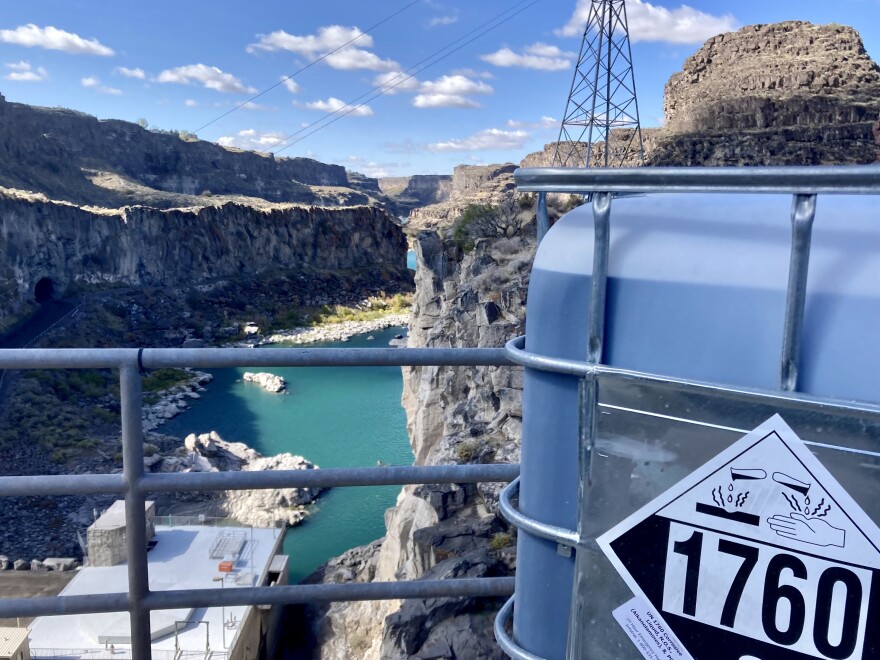2023 brought us a variety of news stories, ranging from rare earth mineral mining, the Greater Idaho movement and quagga mussels making their first appearance in Idaho’s Snake River.
Our top 10 most-viewed web posts highlight the main issues Idaho faced this year, along with breaking down important topics.

#10: Parachuting beavers into Idaho's wilderness? Yes, it really happened.
This story is a frequent flyer in our top stories on any given day, and it's easy to see why. People are always finding out how Idaho Fish and Game parachuted beavers into the Frank Church Wilderness to keep them out of trouble and away from city life.
The idea of parachuting the beavers into the wilderness sounds outlandish, but it was the easiest and cheapest way to solve the problem, costing about $30 for four beavers in 1948.
The box the beavers were dropped in was specially designed so it would open upon impact. While the beaver drop hasn't been done again, it is highly likely the offspring of the original beavers are still in the area.

#9: Layoffs at Micron roughly double, total workforce reduction now 15%
Micron announced in February it would be reducing its workforce by 15% this year, up from the original reduction of 10%. At Micron’s Boise headquarters, the Department of Labor said 5,000 employees work there, and Micron is the state’s largest for-profit employer.
Last year, Micron announced two new manufacturing plants will be built in Boise and near Syracuse, New York; projects propelled by billions in government subsidies via the CHIPS and Science Act.

#8: What’s next for the Snake River after Idaho’s unprecedented invasive mussel treatment?
Magic Valley reporter Rachel Cohen reported extensively on the invasive quagga mussels making their appearance in the Snake River this year. The Idaho Department of Agriculture deployed a chemical treatment two weeks after they were discovered, an unprecedented move in the world of invasive mussel control.
It’s unclear how long it will take for the river ecosystem to recover after tens of thousands of gallons of a copper-based chemical were poured in to kill the mussels. As expected, the treatment also killed most of the fish in the area.

#7: An update on the Greater Idaho movement
Despite ridicule by some lawmakers, and what some have said are insurmountable odds, the Greater Idaho movement continues to quietly grow and expand across eastern Oregon. In June, voters in another Oregon county said they’d like to join Idaho, the 12th county to pass a ballot initiative supporting the movement.
Idaho Matters spoke with reporter Matt Vasilogambros of Stateline and his thousand mile reporter trek across eastern Oregon to find out how the Greater Idaho movement is doing.

Boise State Public Radio reporter James Dawson and Idaho Capital Sun reporter Audrey Dutton reported in April on an Idaho judge issuing a civil arrest warrant for Ammon Bundy after he repeatedly failed to appear in court or respond to a lawsuit filed by St. Luke’s Health System. Ada County Judge Lynn Norton found probable cause that Bundy committed contempt and set his bail at $10,000.

#5: Idaho Senate passes ban on gender-affirming care for minors
State senators passed a bill this year making it a felony for doctors to prescribe medications like puberty blockers or get gender-confirmation surgery to minors. Six other states adopted similar laws, including Georgia, Iowa and Utah.
Gov. Brad Little signed the bill into law in April, but a preliminary injunction by a federal judge has temporarily blocked the law from going into effect on Jan. 1, 2024. If the law does go into effect, providing those medical treatments can be punishable by up to 10 years in prison.

#4: Ammon Bundy arrested on warrant in Gem County
Going back to Ammon Bundy, he was arrested in Gem County in August after an Ada County judge found him in contempt of court. Gem County Sheriff Donnie Wunder was initially hesitant to serve Bundy legal notices in the case, saying he didn’t want to risk harm coming to his deputies “... over a civil issue.”

#3: Probable cause affidavit in case of University of Idaho murders released
Digital Content Coordinator Katie Kloppenburg and intern Richard Rodriguez broke down the key details from the probable cause affidavit in the case of State of Idaho v. Bryan C Kohberger. The affidavit contained details on the DNA evidence found at the scene, accounts from the surviving roommates and video footage of Kohberger’s vehicle before and after the murders.
Now over a year since the murders, Kohberger has waived his right to a speedy trial and a new trial date has not been set. We have been following this story since it started, and you can see all of our coverage here.

#2: New laws roll out in Idaho beginning July 1
Several new laws took effect earlier this year when Idaho's fiscal year began on July 1. The new laws include the elimination of required vehicle emissions tests and landlords being forced to charge “reasonable” fees to renters and requiring 30 days notice before changing the tenant's fees.

#1: A new discovery could lead to a mining resurgence in the West
And our number one story of the year … a new mining rush in the West for rare earth minerals featured on Idaho Matters. Rare earth minerals are a group of 17 little-known elements like neodymium, praseodymium and scandium. These elements are in products many use on a daily basis, like specialty glass products and batteries.
Mining these rare elements in southeast Wyoming and around places around the Mountain West are sure to have big impacts on nearby communities and the environment.
The U.S. Geological Survey has designated most of them as critical for economic and national security. China currently dominates the rare earths market. With only one operating mine in the U.S., the Biden administration wants to expand the domestic supply of these minerals, as well as other “green” metals like cobalt and lithium.




